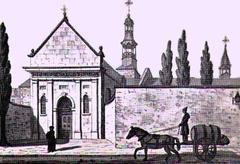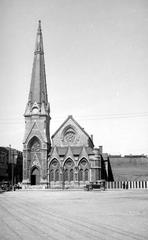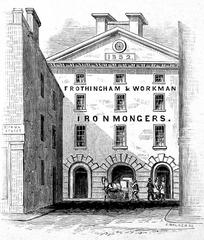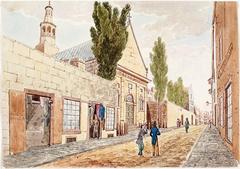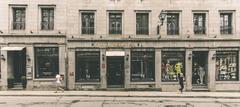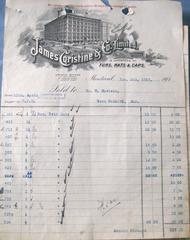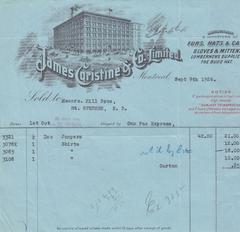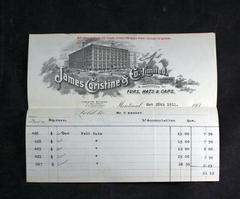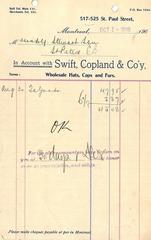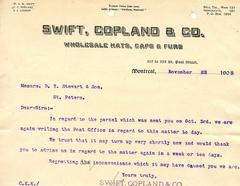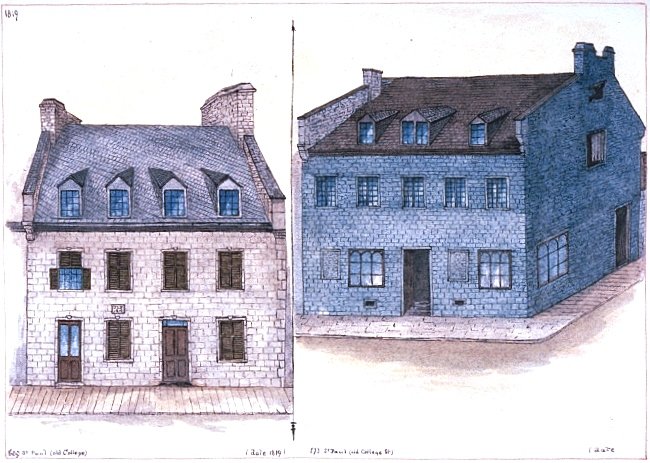
Rue Saint-Paul Montreal: Visiting Hours, Tickets, and Historical Sites Guide
Date: 14/06/2025
Introduction
Rue Saint-Paul, Montreal’s oldest and most storied street, stands at the crossroads of the city’s colonial roots and contemporary vibrancy. Officially laid out in 1672 by François Dollier de Casson and named after Montreal’s founder, Paul de Chomedey de Maisonneuve, this iconic artery has witnessed the evolution of Montreal from a fortified settlement into a cosmopolitan metropolis (Wikipedia; Montreal.ca). Today, Rue Saint-Paul is celebrated for its preserved stone architecture, cobblestone streets, lively boutiques, art galleries, and a rich calendar of festivals and events that reflect Montreal’s multicultural spirit (MTL.org; Montreal.ca).
This comprehensive guide will help you navigate Rue Saint-Paul’s history, key sites, visitor logistics, cultural attractions, and practical travel tips, ensuring a memorable experience in the heart of Old Montreal.
Table of Contents
- Early Origins and Historical Evolution
- Architectural Heritage and Urban Fabric
- Landmarks and Attractions
- Visiting Hours, Tickets & Access
- Cultural Life and Events
- Gastronomy and Local Shops
- Accessibility and Transportation
- Practical Visitor Tips
- Ongoing Redevelopment and Preservation
- Frequently Asked Questions (FAQ)
- Call to Action
- Conclusion
1. Early Origins and Historical Evolution
Rue Saint-Paul’s roots go back to the very founding of Montreal. The street traces the path of an early trail skirting the city’s original fortifications and was officially laid out in 1672 by the Sulpician order (Wikipedia). Named for Paul de Chomedey de Maisonneuve, the city’s founder, Rue Saint-Paul quickly became the commercial backbone of colonial Montreal (Montreal.ca). Archaeological digs have revealed Iroquoian pottery and remnants of Ville-Marie’s first market square beneath the cobblestones, underscoring its layered history (Montreal.ca).
Through the 18th and 19th centuries, Rue Saint-Paul thrived as the city’s main commercial artery, lined with warehouses, merchants’ homes, inns, and civic institutions. Place Royale, once the city’s central market, and the nearby port fostered trade, social life, and cultural exchange (Montreal Trip).
2. Architectural Heritage and Urban Fabric
Rue Saint-Paul is renowned for its European ambiance, narrow layout, and centuries-old cobblestone pavement—one of North America’s oldest (Montreal Trip). The street’s historic buildings are constructed from locally quarried grey limestone, featuring neoclassical, Georgian, and Victorian styles.
Key structures include:
- Bonsecours Market (Marché Bonsecours): A neoclassical landmark completed in 1847, once city hall and now a center for boutiques and exhibitions.
- Notre-Dame-de-Bon-Secours Chapel: Montreal’s oldest stone church (1771), revered as the “Sailors’ Church.”
- Pointe-à-Callière Museum: Located at the city’s birthplace, this museum presents rich archaeological and historical exhibits (MTL.org).
Preservation and adaptive reuse have ensured that Rue Saint-Paul remains a living gallery of Montreal’s architectural legacy (Montreal.ca).
3. Landmarks and Attractions
Bonsecours Market
Located at 350 Rue Saint-Paul E., the Bonsecours Market is a must-see. Its grand silver dome and neoclassical facade are emblematic of Old Montreal. Inside, you’ll find artisan boutiques, galleries, and seasonal exhibitions.
Hours: 10:00 AM–6:00 PM daily.
Admission: Free; some exhibitions may require tickets.
Notre-Dame-de-Bon-Secours Chapel and Marguerite Bourgeoys Museum
Montreal’s oldest stone chapel (1771) and the Marguerite Bourgeoys Museum offer insights into colonial history, religious art, and archaeological remains.
Hours: Tuesday–Sunday, 10:00 AM–5:00 PM; closed Mondays.
Admission: Adults CAD 7; students/seniors CAD 5; children under 12 free.
Pointe-à-Callière Museum
Located at 350 Place Royale, this museum explores Montreal’s archaeological and historical roots.
Hours: Tuesday–Sunday, 10:00 AM–5:00 PM.
Admission: Adults CAD 21; seniors/students CAD 18; children under 12 free.
Place Jacques-Cartier
A bustling historic square intersecting Rue Saint-Paul, Place Jacques-Cartier is alive with performers, artists, and outdoor cafés in summer.
Montreal Clock Tower and Old Port
At the street’s eastern end, the Montreal Clock Tower offers panoramic city and river views, while the Old Port features walking paths, markets, and recreational activities.
4. Visiting Hours, Tickets & Access
Rue Saint-Paul: Open 24/7 as a public street with no entry fee.
Attractions: Most open around 10:00 AM and close by 5:00–6:00 PM; hours may vary by season and holiday.
Tickets: Required only for select museums and special exhibits.
Getting There:
- Metro: Place-d’Armes and Champ-de-Mars stations (both wheelchair accessible).
- Bus/BIXI: Several bus lines serve Old Montreal; BIXI bike rentals are available nearby.
- Parking: Limited—public transit is recommended.
5. Cultural Life and Events
Rue Saint-Paul is a cultural artery, hosting festivals, art installations, and public performances, especially during pedestrianization from mid-April to late October (Montreal.ca). Summer brings open-air concerts, culinary festivals, and vibrant street life. The street’s multicultural identity is reflected in bilingual signage, diverse businesses, and a calendar of events that celebrate Montreal’s French and international heritage.
6. Gastronomy and Local Shops
From traditional French bistros to modern fusion restaurants, Rue Saint-Paul offers a culinary journey through Montreal’s tastes. Outdoor terraces are a highlight in warmer months. The street’s boutiques and galleries showcase local artisans, crafts, and fashion, making it a prime destination for unique shopping.
7. Accessibility and Transportation
While Rue Saint-Paul’s cobblestones and narrow passages evoke charm, they may challenge those with mobility concerns. Recent upgrades have improved ramps and wayfinding signage, but comfortable footwear is still advisable (Montreal.ca).
Accessibility:
- Major landmarks and metro stations are wheelchair accessible.
- Some boutiques and museums provide accessible entrances—contact venues ahead for details.
8. Practical Visitor Tips
- Best time to visit: Summer offers festivals and lively street scenes; winter brings a quieter, festive atmosphere.
- Photography: Early morning or late evening provides the best light and fewer crowds.
- Guided tours: Book ahead during peak seasons for history, architecture, or specialty themes (toeuropeandbeyond.com).
- Language: French is predominant, but English is widely spoken.
- Safety: Watch for horse-drawn carriages and occasional vehicle traffic in shared zones.
9. Ongoing Redevelopment and Preservation
Rue Saint-Paul is undergoing phased redevelopment, including sidewalk resurfacing, modernized lighting, and infrastructure improvements to enhance accessibility and preserve archaeological finds (Montreal.ca). Educational displays highlight discoveries and ongoing preservation work.
10. Frequently Asked Questions (FAQ)
Q: What are Rue Saint-Paul’s visiting hours?
A: The street is open 24/7; individual attractions usually open 10:00 AM–5:00/6:00 PM.
Q: Do I need tickets to visit Rue Saint-Paul?
A: No tickets are needed for the street itself; museums and special exhibits may require admission.
Q: Is Rue Saint-Paul accessible for people with disabilities?
A: Upgraded sections are accessible, but cobblestones can pose challenges. Most major attractions strive for accessibility.
Q: Are guided tours available?
A: Yes, a variety of guided and self-guided tours focus on history, architecture, and art.
Q: What’s the best way to get there?
A: Public transit is recommended—use Metro stations Place-d’Armes or Champ-de-Mars.
11. Call to Action
Plan your journey along Rue Saint-Paul to experience the best of Montreal’s history, culture, and cuisine. Download the Audiala app for guided tours, exclusive tips, and real-time updates. Follow us on social media for the latest news and stories, and browse our related articles for more on Montreal’s must-see neighborhoods and attractions.
12. Conclusion
Rue Saint-Paul is Montreal’s living museum—an open-air showcase of the city’s evolution, resilience, and dynamic spirit. From its historic landmarks and vibrant festivals to its renowned gastronomy and artistic energy, this street encapsulates Old Montreal’s unique charm. Whether you are a history enthusiast, art lover, or culinary explorer, Rue Saint-Paul promises a memorable, immersive experience that connects you to the heart of the city.
References
- This guide has been informed by official and expert sources:
- Saint-Paul Street (Montreal) - Wikipedia
- Réaménagement de la rue Saint-Paul Ouest, Montreal.ca
- Visit Old Montreal: Famous Historical Streets, Montreal Trip
- Rue Saint-Paul and De La Commune, MTL.org
- Les piétonnisation au cœur de Ville-Marie, Montreal.ca
- Free Things to Do in Montreal, Canadian Train Vacations
- Exploring the Best of Old Montreal, Dream Plan Experience
- An Itinerary Through Old Montreal, To Europe and Beyond
Images, interactive maps, and internal links to related Montreal guides are recommended for optimal user experience and SEO.

